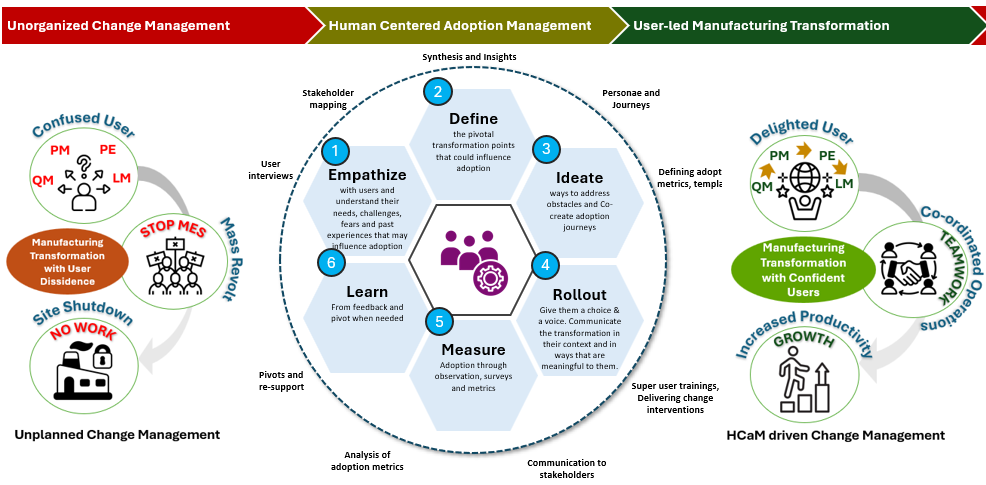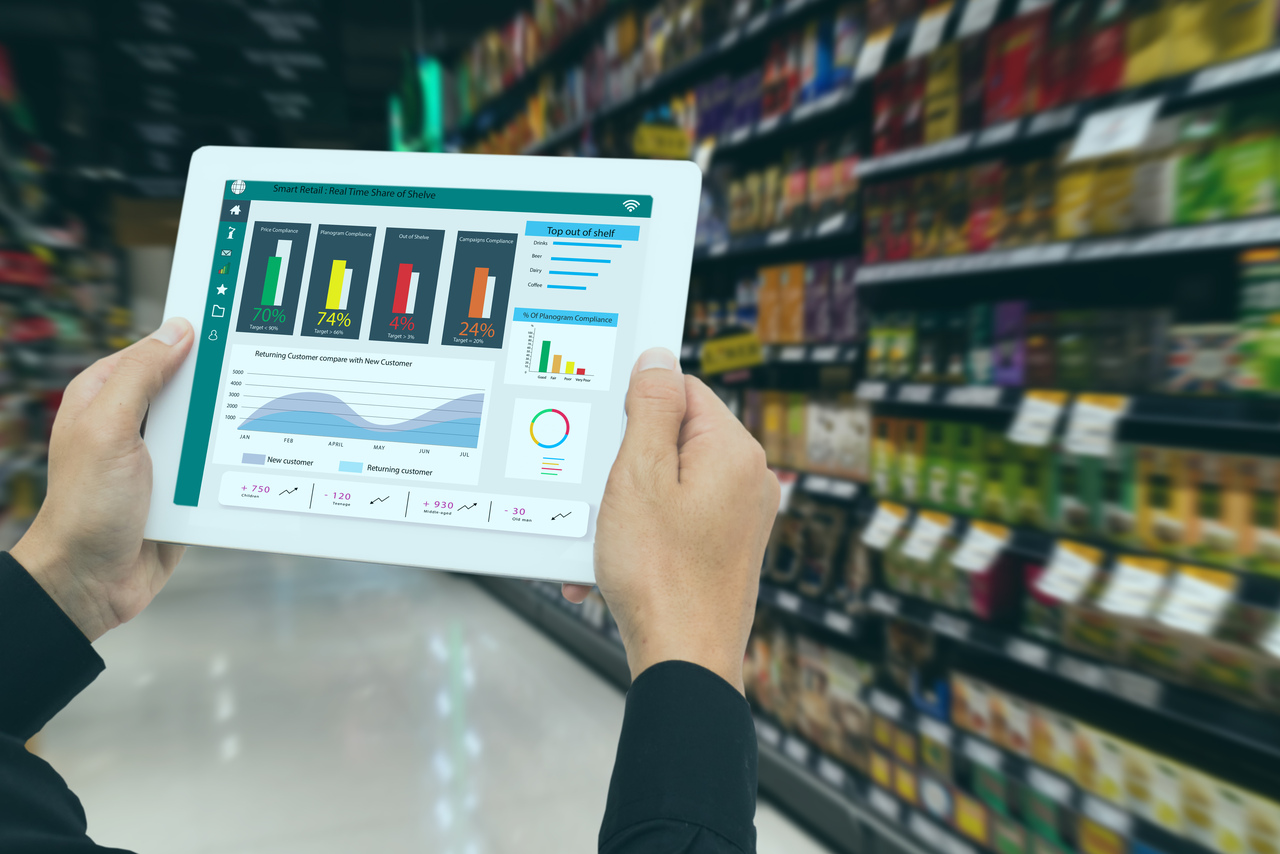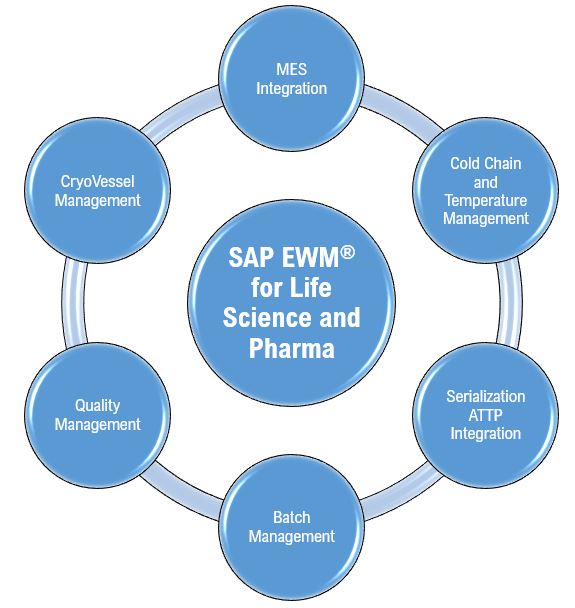“Embedding a focus on user adoption in every aspect of the Manufacturing transformation journey right from the beginning, not as an afterthought” is the key mantra for a successful Manufacturing transformation program
With technology advancements & the evolution of a never-ever competitive business model across segments, establishments have amplified their IT spends over the years with inherent focus to transform the OT-IT layer (Level 2 and Level 3 of ISA-95 Architecture); that paves way for better factory visibility, non-disruptive operations, increased productivity and reduced wastage/losses (across resources). In this pursuit, the contribution of users across roles (users represent the complete class covering Production Operators, Supervisors, Site Managers, Quality Personnel, Inspectors to name a few) is critical to the success of the transformation journey. Applications positioned at Level 2 and Level 3 are built for the users, “by the” users and accountability lies with the users. The entire lifecycle of these applications from nurture to growth to end of life is meticulously crafted by the user community.
MES, the abbreviation of Manufacturing Execution systems has been an integral part of Level 3 systems that orchestrate the entire Production execution cycle right from the pick of raw materials to the completion and storage of the finished product. In this cycle, it enables comprehensive tracking of everything that comes the way – Man, Material, Machine and Methods. Man (the users) are key in executing the production cycle on the floor as well as on the MES system and hence are the ‘true owners’ of the MES application. Any transformation with MES as part of a larger IT – OT strategy with significant business outcomes requires seamless convergence with the users from its design to its build and the approval to realize it on the floor. As such transformations could bring a paradigm shift in ways of working, real-time tracking of resources including users and many more; it has an ability to revalidate and reestablish to Manufacturing ecosystem for a good. At the onset of such transformations, it will pose challenges to the users in adopting to the ‘rapid’ change to the day in a life. On the run, it ushers enormous benefits to the business realizing the value & enhances user experience with the state-of-the-art application. It is vital that users are onboard and party to this journey with utmost discipline, resilience and fortitude in initial stages.
Based on the requirements and presence/maturity of MES applications within the enterprise, there are key business cases (not all inclusive) wherein an effective change management and sense of entitlement within users is key to the success of the great transformation initiative –
· Greenfield MES implementation for a new factory or a manually run factory
· Brownfield MES implementation for an existing factory with legacy multiple apps operating in silos
· Migration from a legacy MES application to another MES application
· Multi-site program leveraging a Global Template creation, emergence of Golden copy and Rollout to other sites
· Version upgrades for existing MES application
· Enhancements/Additional features for existing MES application
· Periodic features and updates for SaaS MES packages
· IIOT Use cases with advanced OT-IT integrations with MES at heart
Organizational Change Management is a structured and effective mechanism to ingest changes in ways of working (Process or Technology change) in a non-disruptive manner driven through user adoption. User adoption is a human experience that help answers key WHYs, HOWs, WHEREs and WHATs in a polished manner building consensus and inclusiveness.
· WHY is this happening and WHY now?
· HOW will this change the way I get my job executed?
· WHERE will I learn to do things the new way?
· WHAT is in it for me?
Since MES elaborates and drives the processes for day in a life of the users across the roles on the floor & converges technology into the process, it is impeccable to push MES application on the floor wrapped under the safe covers of OCM. It will ensure that every individual user of the application owns it, be accountable and is addicted to it. Bringing in a change to the Manufacturing execution on the floor irrespective of varying degree of change is cumbersome and a rocky mountain ride; however, riding on the powerful OCM vehicle will make it an effortless and painless affair. Embedding a focus on user adoption in every aspect of the Manufacturing transformation journey right from the beginning, not as an afterthought.
HcAM (Human centric Adoption Management) is a felicitous way of OCM that strives to democratize the change management process; acknowledging the important fact that every human is different and hence structuring the delivery of the content to impress upon every individual. The journey starts with understanding the personas that represent the users, identify micro interactions that comprise their ways of working, iterative interactions pointing the users the right direction in the way they would understand it. Eventually, all such interactions add up to a well-supported adoption of the new system and change the perception from a threat to an exciting opportunity.

Essentially, it is all about building and sustaining the change. Knowing people is a complex equation of research and personas the unravels their needs and requirements, fears and apprehensions, day in a life (activities), current challenges, desires and expectations, preferences on ways of learning etc. and then developing the narrative for the content that must be delivered. The 3 ‘RIGHT’ predominantly drives the delivery mechanism – Right Message at Right Time through Right channels. The other part of it is to communicating convenience and incentivizing change. Communications must be frequent, targeted, pleasant, useful and should occur both on either side of the launch event.
While the approach is not laid on casting stone and there are nuances as a function of segment, processes, culture, personas etc., a quintessential sequence of steps are as follows –
1. Discovery through interviews and shadowing; research synthesis and generate insights, personality mapping, uncovering any aversion to the change based on various factors
2. Design Thinking to deep-dive into problem space and co-create potential solutions that would increase understanding and buy-in globally
3. Formulate the right adoption strategy (create a holistic adoption plan, adoption metrics, user journeys etc.) and drive it through an empowered change champion from within the personas who will lead from the front
4. Build experience centers and forums to try out the solution/application
5. Targeted training and innovative communications to win over the demanding group and build consensus
Conclusion
With tectonic shift powered by rapid technological advancements, harnessing the power of digital transformation in manufacturing has been the norm worldwide despite challenges. Staging the journey to be “heartful” is indispensable & the heart of Manufacturing resides in the personas – live and lean their life, be empathetic, be the admirer, bust the myths, mold the ambassadors of this wonderful global marathon.








